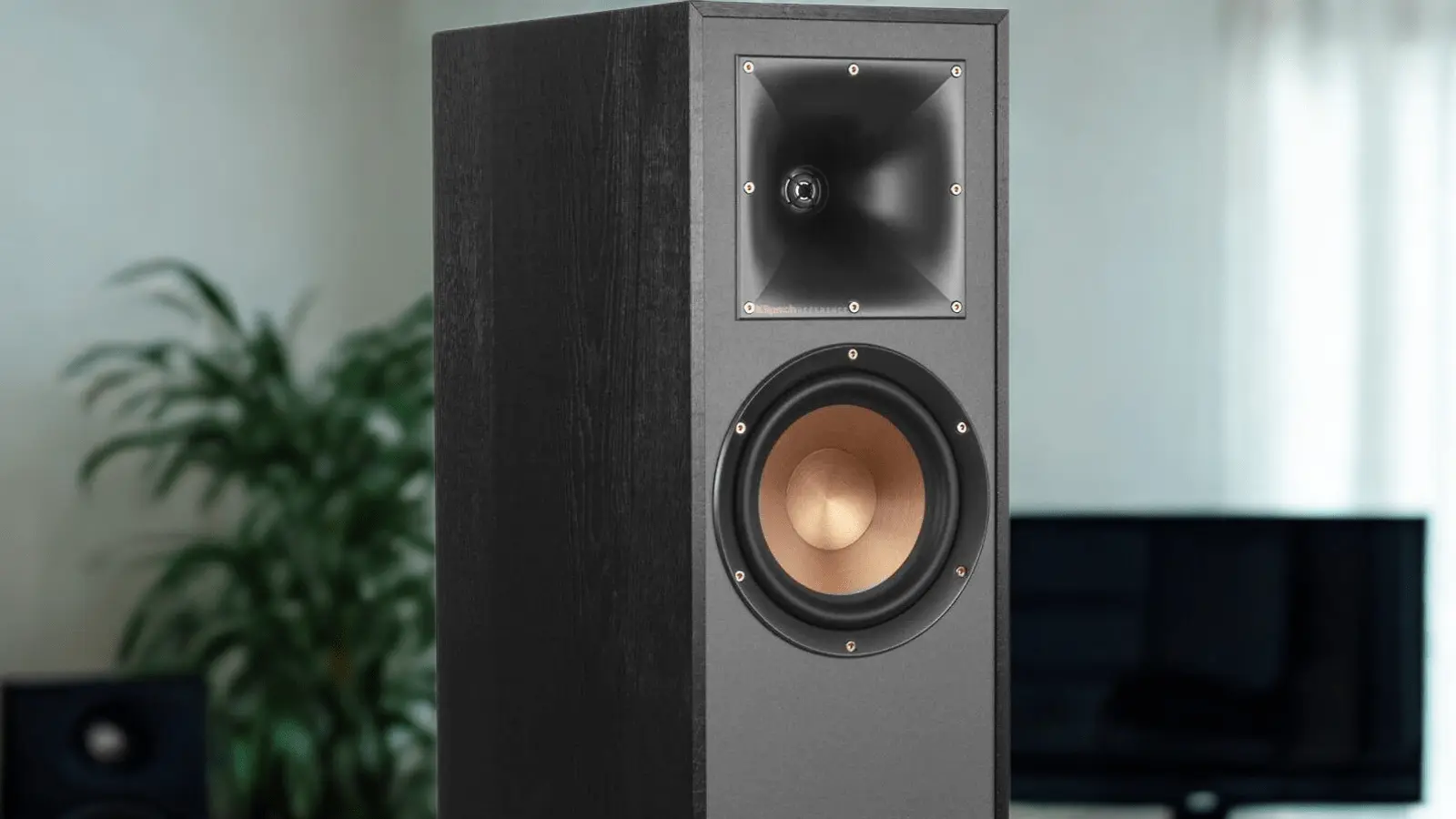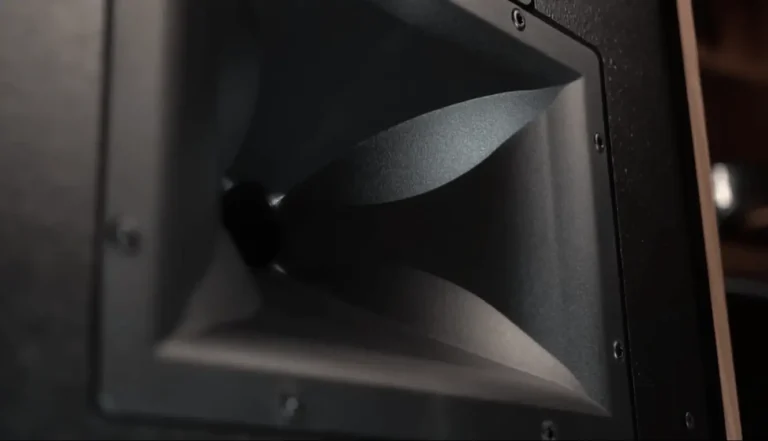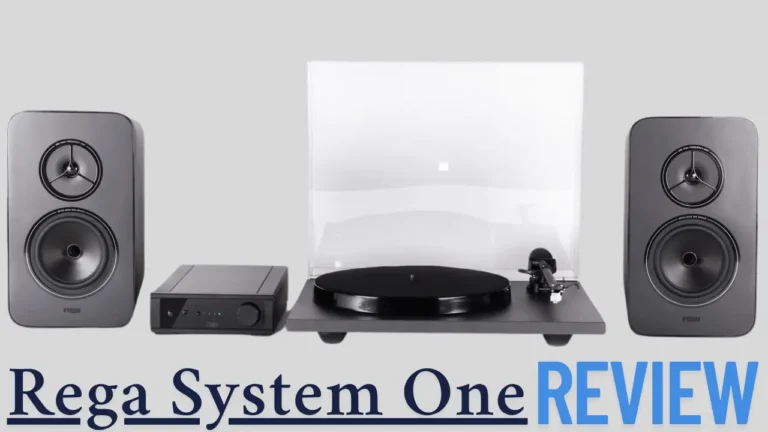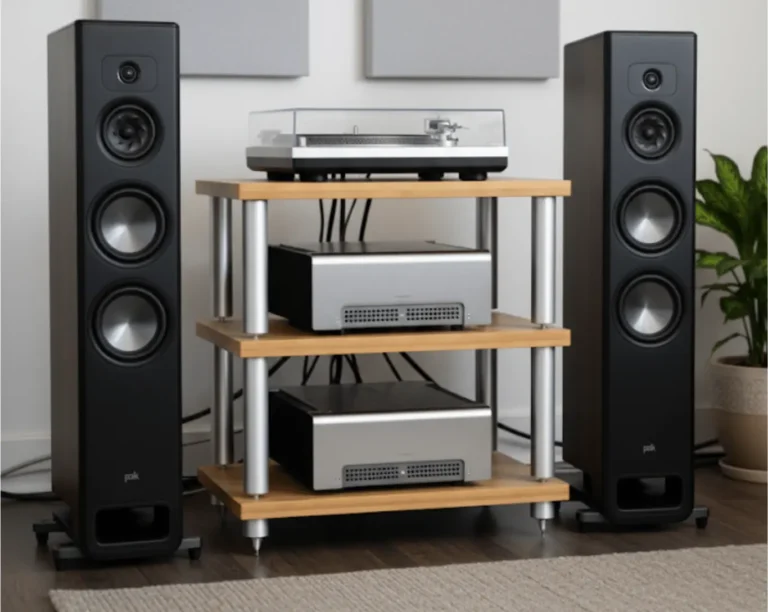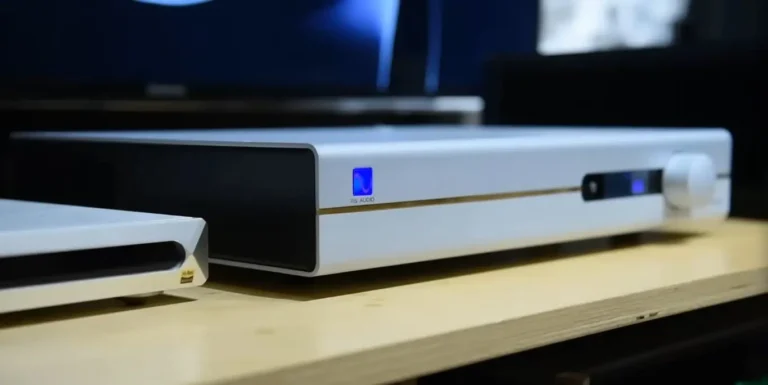These Klipsch Speakers Break Every Audiophile Rule. Here’s Why They Sound Incredible
These days, the speaker market is all over the place. There are so many different kinds of tech and designs out there. But even with all that variety, a lot of us still hang onto old stereotypes: metal speakers are always too bright, horn tweeters are just for blasting sound, and any big speaker with a bass port is going to be boomy.
This is especially true when you’re looking for a good deal. We often assume that if a design looks unusual or advanced, it has to be expensive. And if it’s not expensive, then we think it’s probably just a cheap gimmick and not worth our time.
Check Out: I Finally Experienced a True Concert in My Living Room, Thanks to Klipsch
If you’ve ever thought that way, it’s time just to hit the reset button. The best thing you can do is ignore the rumors and listen for yourself. You might be in for a real surprise. I definitely was when I checked out Klipsch’s R-610F floorstanding speakers. And I say that as someone who already knows what Klipsch can do, these really caught me off guard.
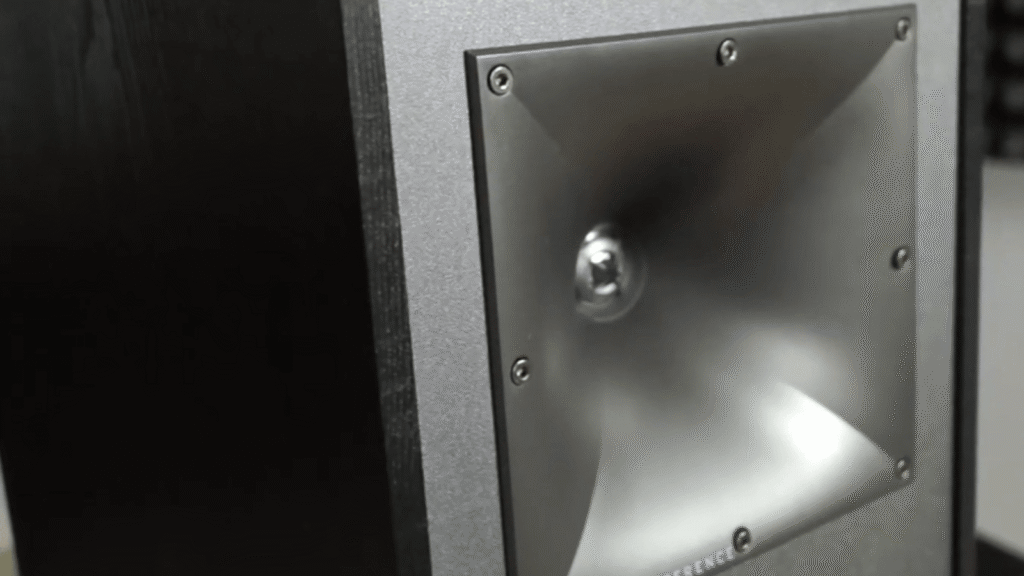
Challenging First Impressions: Design and Build
At first look, the klipsch reference r-610f Review seems like it’s basically trolling the hi-fi snobs. I mean, a big, affordable tower speaker with their fancy horn tweeter? A simple two-driver setup in a large, ported cabinet? It’s basically a checklist of everything that makes a picky audiophile nervous.
An Aggressive, “Rock and Roll” Aesthetic
If you’re not weighed down by all those high-end audio hang-ups, this speaker’s design is actually pretty cool. The whole vibe is pure rock and roll: you’ve got exposed screws, that signature copper-colored woofer, and a sleek, symmetrical horn on top. They’re built into a sharp, angular cabinet sitting on angled legs, making a bold statement that works in a lot of modern spaces. If that’s a bit too much for your style, just pop on the magnetic grills—they turn it into a simple, clean black box. Plus, the tough finish means these things are built to last.
Legacy of a Legend: 70 Years of Horn Technology
If you dig into the history of Paul Klipsch and the generations of engineers who have refined his horn technology, any skepticism quickly turns into trust. The legendary Klipschorn debuted over 70 years ago. If the company’s horn designs weren’t truly exceptional, could they have survived in the competitive Hi-Fi world for so long? Design projects without a foundation of superior sound quality rarely last. These guys know how to make horns, and with modern manufacturing, they can do it affordably.
The Horn-Loaded Advantage: A Technical Deep Dive
A closer look reveals that every sound-emitting component of the Klipsch R-610F is engineered around the horn principle, a core element of the Klipsch Reference series.
The Tractrix Horn Tweeter: Precision and Clarity
The most obvious feature is the square Tractrix horn, which boasts a 90∘ dispersion angle. It houses an aluminum tweeter on a Kapton suspension, a combination known for high linearity and low distortion. This design focuses sound energy at the listening position while distributing it evenly, ensuring a wide, stable sweet spot.
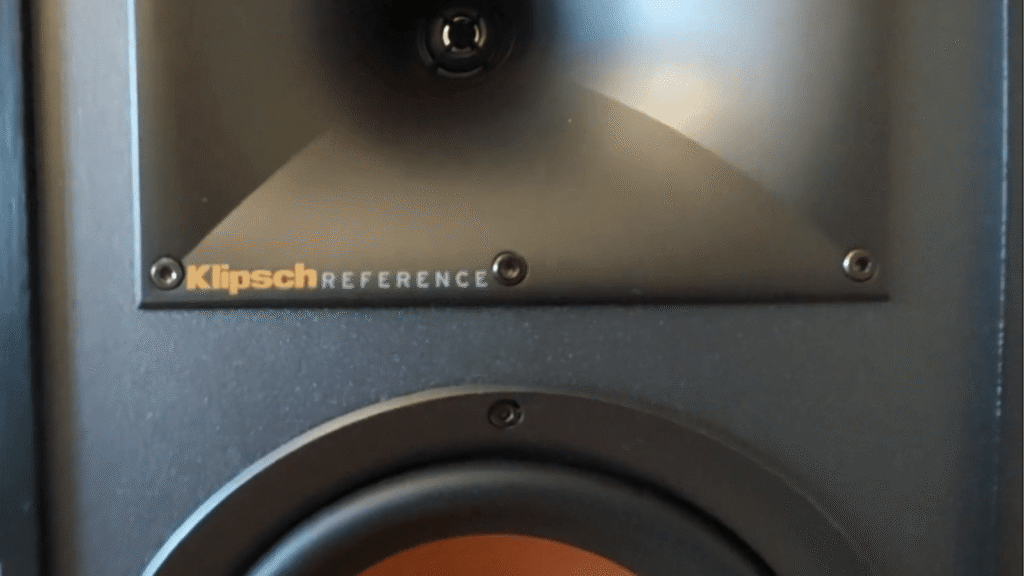
The IMG Woofer’s Secret Weapon
The mid-low frequency driver, with its signature copper coloring, is an Injection Molded Graphite (IMG) woofer. This composite material provides the ideal blend of lightness and rigidity needed for pistonic motion. Here, the horn principle is subtler: the driver’s mounting flange is shaped to act as a waveguide, minimizing diffraction distortion that occurs when drivers are mounted flush to a flat baffle.
A Smarter Bass Port for Tighter Lows
Finally, the rear-firing phase inverter port is horn-loaded at both ends. This bell-shaped flaring prevents air turbulence (port chuffing), reducing distortion and resulting in a faster, tighter, and more accurate bass response.
The Listening Test: How Do the Klipsch R-610F Sound?
The technical design translates directly into a remarkable listening experience. The Klipsch R-610F sound quality is defined by its expansive soundstage and clean presentation.
An Expansive, Three-Dimensional Soundstage
The 90∘ Tractrix horn creates a stereo image so wide that, at a distance of 2.5 meters, it comfortably accommodates two or three listeners. But its most impressive trick is creating a three-dimensional, almost holographic sound field. When listening to Roger Waters’ “Amused To Death,” sound effects emerge from all around, mimicking a multi-channel home theater system. Two-microphone recordings, like Elvis’s “Fever (Take 1),” are rendered with deadly realism. The sound feels completely disconnected from the speakers themselves.
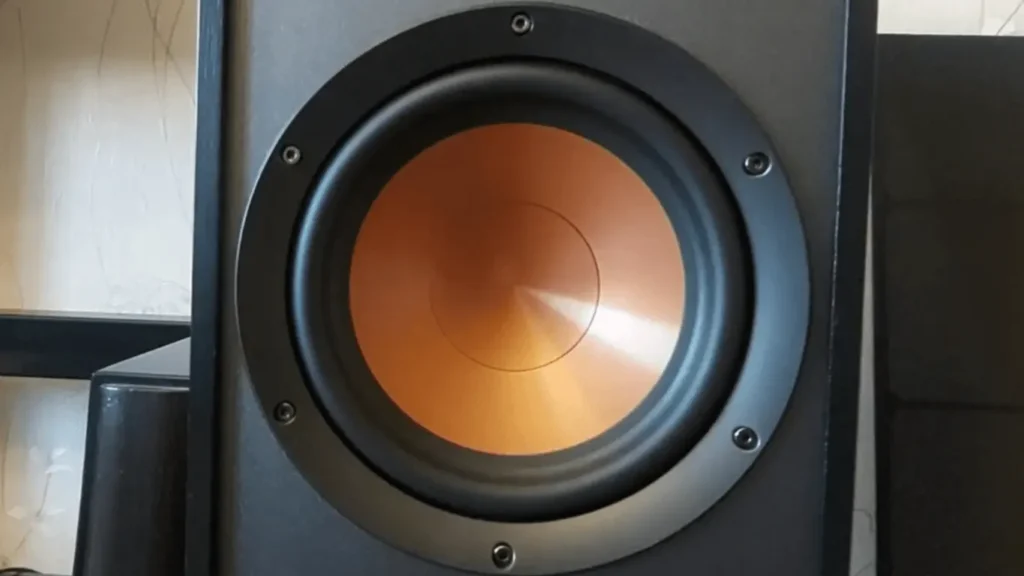
The Magic of Minimized Room Reflections
This incredible spatial effect is largely due to the horn’s controlled directivity. By focusing the sound towards you, it minimizes early reflections from your room’s side walls—a major source of sonic degradation. This means the high frequencies you hear are incredibly clean and transparent, a rarity in this price range. It’s a priceless gift, effectively freeing you from the need for acoustic panels.
Also Read: I Thought I Knew Klipsch: Then I Reviewed the Klipsch RP-6000F II
Setup and Positioning: Unlocking Peak Performance
To achieve this “magical effect,” proper setup is crucial. The Klipsch speakers need to be precisely aimed (toed-in) at the primary listening position. Achieving symmetry in their placement within the room will further enhance the focus and three-dimensional imaging.
Sound Character and Amplifier Pairing
The Klipsch R-610F sounds like large, 8-inch studio monitors, not typical budget floorstanders. They prioritize quality over quantity in the low end.
Monitor-Like Precision with a Signature Klipsch Energy
The bass is collected, neat, and precise, completely avoiding the boominess that plagues so many competitors. The midrange is transparent and well-focused, while the highs are airy and full of detail. This accuracy makes them fantastic speakers for music of all genres, from jazz and classical to metal and electronic. Yet, they retain the signature Klipsch character: an energetic, dense, and open presentation that’s incredibly comfortable, even at high volumes, without a hint of harshness.
The Perfect Partner: Synergy with the Emotiva TA-100
The amplifier used for this review, the Emotiva TA-100, proved to be a superb match. Its pure, dense sound perfectly complemented the speakers’ characteristics and unlocked their full dynamic potential. This combination offers a level of Hi-Fi performance that is exceptionally attractive for its modest price.
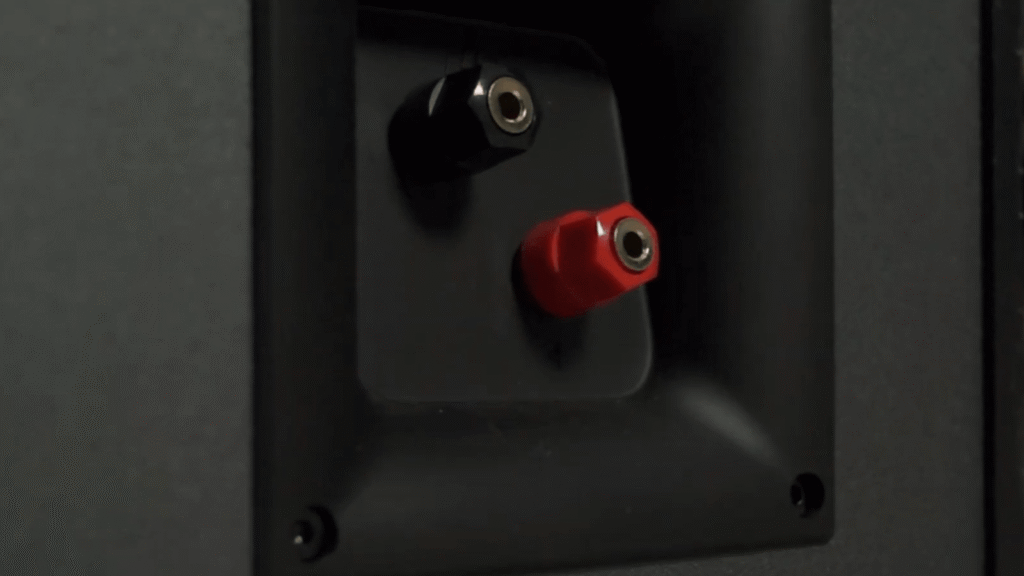
Conclusion:
The Klipsch R-610F is a refreshingly different kind of budget floorstander. Free of boomy bass and smeared mids, it offers a clean, lively, and transparent sound with a wide, immersive stage—qualities rarely found at this price.
Paired with the Emotiva TA-100, they punch far above their weight, delivering a sound closer to professional monitors than to typical entry-level floorstanders.
For listeners who value dynamics, energy, and clarity over sheer bass weight, the Klipsch R-610F is an excellent choice—and proof that horns, when done right, are not just for show.
You Might Like:
Pros And Cons
Pros
- Clean, tight bass without boominess
- Wide, immersive soundstage thanks to Tractrix horn
- Clear, detailed highs that avoid harshness
- Attractive design with copper woofer & optional grilles
- Excellent value for money
Cons
- Limited deep bass (subwoofer recommended for large rooms)
- The sweet spot requires careful toe-in and placement
- Sound character changes noticeably outside the listening zone
Klipsch R-610F Specifications
- Type: Floorstanding loudspeaker (2-way, bass-reflex)
- Drivers:
- 1″ Aluminum LTS tweeter in 90° x 90° Tractrix horn
- 6.5″ Spun-Copper IMG woofer
- Frequency Response: 45 Hz – 21 kHz (±3 dB)
- Sensitivity: 94 dB @ 2.83V / 1m
- Power Handling: 85W continuous / 340W peak
- Nominal Impedance: 8 ohms
- Crossover Frequency: 2,000 Hz
- Enclosure: MDF with Tractrix rear-firing port
- Dimensions (H x W x D): 37″ x 9.4″ x 15.1″ (940 x 240 x 380 mm)
- Weight: ~40 lbs (18.1 kg) each
- Finish Options: Black wood-grain vinyl with copper driver

